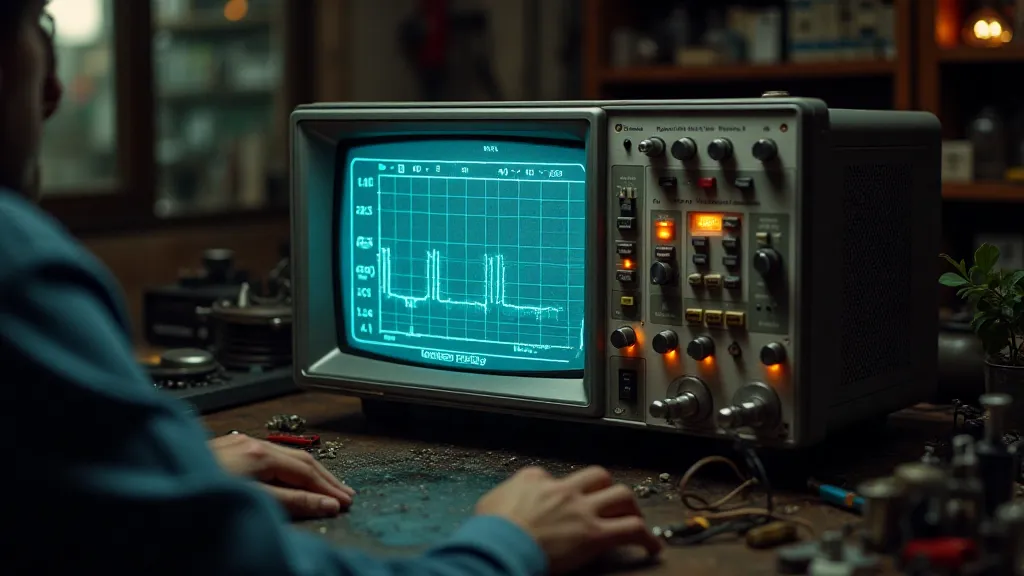The Ghost in the Machine: Debugging the Unseen in Arduino Projects
There’s a peculiar beauty in the imperfection. It’s something I truly appreciate, having spent years restoring antique accordions. Each bellows, each key, each tiny lever tells a story of meticulous craftsmanship, yes, but also of the subtle quirks and compromises inherent in a handcrafted instrument. The slightly warped wood, the faint buzz from a reed, the unexpected resistance of a key—these aren’t defects; they’ve become whispers of the past, evidence of a human hand at work. And it's a similar truth that governs our electronics projects, particularly when delving into the intricacies of Arduino and Raspberry Pi. Beyond the immediate gratification of blinking LEDs or controlling a motor, lies a labyrinth of subtle issues that often defy simple observation. This is where we encounter the “ghost in the machine”—those unseen imperfections that haunt even the most meticulously planned circuits.

Beyond the Serial Monitor: A Different Kind of Listening
We all start with the serial monitor. It’s our digital stethoscope, allowing us to eavesdrop on the Arduino’s internal monologue. We print values, check flag statuses, and generally attempt to make sense of the chaos. But what happens when the problem isn’t easily quantified? What if the behavior is intermittent, unpredictable, or seems to contradict the code itself? That’s when the real detective work begins. We need to learn to *listen* to the hardware, not just read its digital pronouncements.
Restoring accordions taught me this crucial lesson. Initially, I'm often frustrated by a bellows that leaks air or a key that sticks. It's tempting to simply replace the component, forcing a mechanical "solution." But true restoration involves understanding *why* it's failing. Is the leather dry and brittle? Has the wood warped due to humidity? Is a spring fatigued? Often, the problem isn't a single component, but a cascade of small factors interacting in unexpected ways. Similarly, with electronics, we often focus on individual lines of code, overlooking the complex interplay of timing, memory allocation, and power fluctuations. A more holistic view is needed to understand the performance characteristics of your entire system; something often explored in detail when discussing beyond the breadboard and optimizing circuit performance.
Memory Leaks: The Silent Accumulation
One of the most insidious “ghosts” is the memory leak. In Arduino programming, this isn't always about catastrophic crashes. More often, it manifests as gradual slowdown, increasing latency, or seemingly random behavior over time. Imagine an accordion's reeds slowly accumulating dust, affecting their responsiveness. A small, easily overlooked error—forgetting to `delete` a dynamically allocated object, or continually reallocating memory without freeing it—can slowly consume available RAM.
Diagnosing memory leaks can be surprisingly difficult. The serial monitor provides little help. You need more sophisticated tools. The Arduino IDE’s memory map view (available in some versions) is a start, showing you how much RAM is being used. However, a more powerful technique is to periodically dump the contents of critical memory regions and compare them over time. This might involve using debugging libraries or even writing custom code to examine memory addresses. Remember, even seemingly insignificant variables can contribute to a gradual memory drain.
Timing Issues: The Dance of Precision
Electronics, especially those involving real-time interactions or sensor readings, are exquisitely sensitive to timing. Even tiny delays can lead to unexpected results. Think of the precise alignment required for an accordion’s reeds to resonate correctly. A slight misalignment, even a fraction of a millimeter, can drastically alter the tone and responsiveness of the instrument. Similarly, an Arduino project dealing with sensor data might exhibit jitter or inaccurate readings if timing inaccuracies creep in.
Sources of timing problems are numerous. Interrupt service routines (ISRs) can be unpredictable in their execution time. Blocking functions like `delay()` can interrupt critical processes. Even the microcontroller’s internal clock might be subject to drift or noise. The best approach is to minimize dependencies on precise timing. Avoid `delay()` whenever possible, use non-blocking techniques, and carefully analyze the timing characteristics of your hardware. Consider using hardware timers for time-critical tasks. And use an oscilloscope - a vital tool for visualizing signals and revealing timing anomalies that are invisible to the serial monitor. Building robust and performant systems, often reliant on precise timing, requires careful consideration of the entire electronics chain - an important topic of discussion in detailed explorations of Raspberry Pi and smart home automation.

The Power Supply: The Foundation of Stability
It’s easy to overlook the humble power supply, but it's the bedrock upon which everything else rests. A fluctuating voltage, excessive noise, or insufficient current can trigger a whole host of seemingly unrelated problems. Think of the bellows of an accordion – if they are weak or damaged, the entire instrument suffers, no matter how finely tuned the reeds. Similarly, an Arduino project running off an unstable power source can exhibit erratic behavior, corrupted data, or even complete failure. A stable and well-designed power supply often separates a functional prototype from a production-ready system.
Use a regulated power supply, shield sensitive components from noise, and carefully measure voltage and current levels. Consider using a multimeter and even an oscilloscope to examine the power supply’s output. Don’t assume that the power supply is working correctly just because the Arduino is “powering on.” A flickering LED might not reveal the underlying instability that is gradually eroding the reliability of your entire project. The impact of a consistent power supply is felt in nearly every aspect of the project.
Beyond the Basics: Advanced Debugging Techniques
The techniques we’re discussing are just the tip of the iceberg. Advanced debugging often involves a deep understanding of microcontroller architecture, memory management, and signal integrity. Learning to interpret waveforms on an oscilloscope, understanding how electromagnetic interference affects your circuit, and mastering the art of reverse engineering can elevate your debugging skills to a whole new level. Consider exploring advanced topics such as logic analyzers, JTAG debugging, and memory profiling. These techniques allow you to pinpoint the root cause of complex issues and optimize your project for maximum performance and reliability. Sometimes, the “ghost in the machine” isn't a simple bug but a systemic issue requiring a complete rethinking of your design.
The Importance of Documentation and Version Control
While powerful debugging tools and techniques are essential, the foundation of any robust project lies in meticulous documentation and version control. As your projects grow in complexity, it becomes increasingly difficult to remember every detail of your design. Keeping detailed records of your code, circuit diagrams, and debugging steps is critical for troubleshooting problems and collaborating with others. Version control systems like Git allow you to track changes to your code and revert to previous versions if necessary. This simple practice can save you countless hours of frustration and ensure that your project remains manageable as it evolves.
Embrace the Imperfection
Debugging the “ghost in the machine” is a humbling process. It requires patience, persistence, and a willingness to challenge your assumptions. It's a far cry from the instant gratification of a simple blinking LED. But it's also incredibly rewarding. Just as understanding the nuances of an antique accordion allows you to appreciate its craftsmanship and history, so too does grappling with the subtle imperfections of an Arduino project deepen your understanding of electronics and programming. The seemingly minor fluctuations often have cascading effects, requiring a holistic understanding of the entire system. A system built to operate consistently and reliably requires a similar level of care and attention to detail in its construction and maintenance.
Perhaps the greatest lesson is this: embrace the imperfection. Strive for excellence, yes, but also accept that even the most meticulously planned circuits will harbor subtle quirks. The truly skilled maker isn’t the one who avoids these imperfections; it’s the one who understands them, adapts to them, and incorporates them into the unique character of their creation. Just like the slightly warped wood or the faint buzz of a reed adds charm and depth to an antique accordion, so too can the “ghost in the machine” contribute to the unique personality of your Arduino project. This pursuit of a finely tuned system is a continuous process of refinement and iteration, a journey of discovery that can lead to truly innovative and meaningful creations – something often explored when creating innovative displays like Chromatic Reverberations.

Ultimately, debugging isn't about eliminating imperfections; it's about understanding and integrating them into a functional and unique creation. It’s a testament to the beauty of handmade things.





